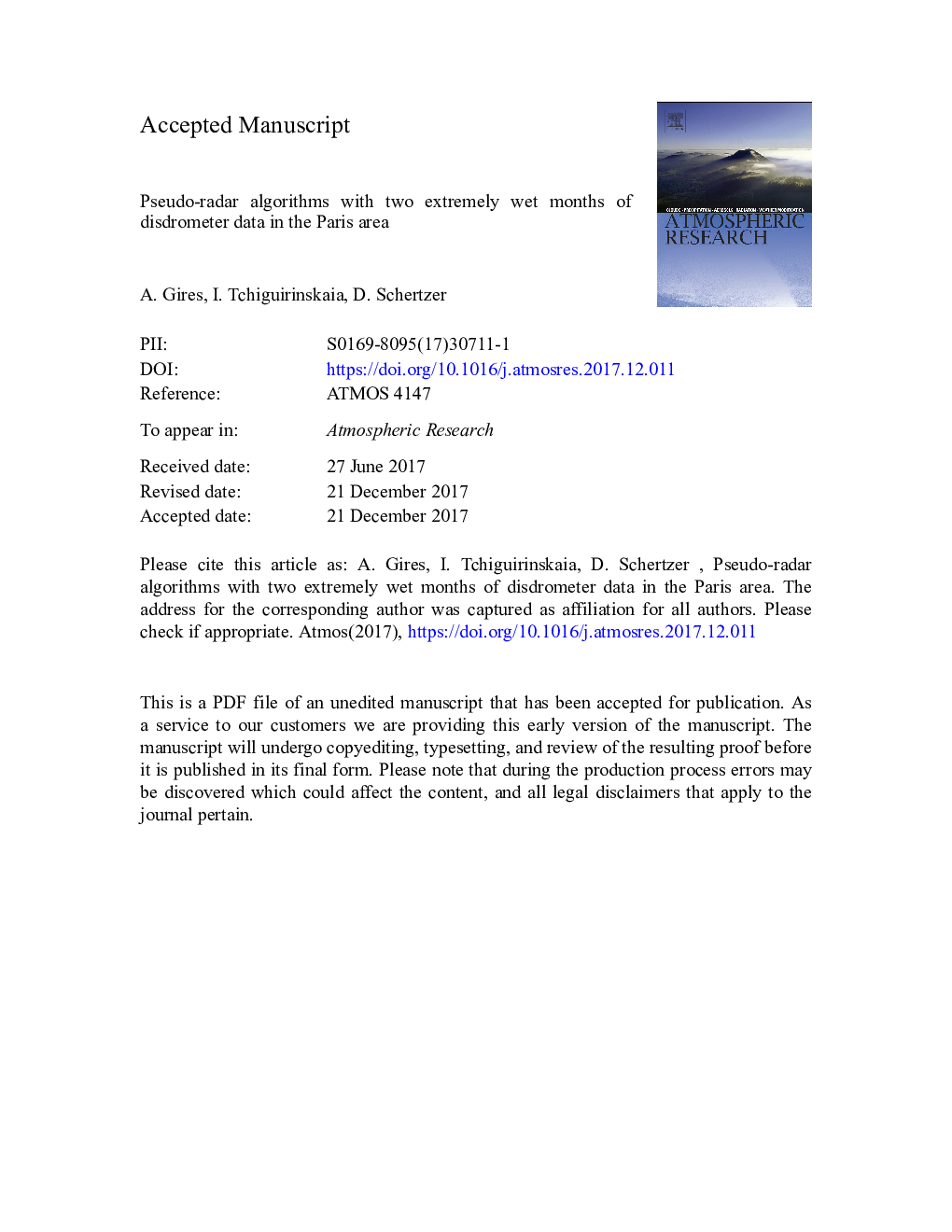| Article ID | Journal | Published Year | Pages | File Type |
|---|---|---|---|---|
| 8864771 | Atmospheric Research | 2018 | 38 Pages |
Abstract
Disdrometer data collected during the two extremely wet months of May and June 2016 at the Ecole des Ponts ParisTech are used to get insights on radar algorithms. The rain rate and pseudo-radar quantities (horizontal and vertical reflectivity, specific differential phase shift) are all estimated over several durations with the help of drop size distributions (DSD) collected at 30 s time steps. The pseudo-radar quantities are defined with simplifying hypotheses, in particular on the DSD homogeneity. First it appears that the parameters of the standard radar relations Zh â R, R â Kdp and R â Zh â Zdr for these pseudo-radar quantities exhibit strong variability between events and even within an event. Second an innovative methodology that relies on checking the ability of a given algorithm to reproduce the good scale invariant multifractal behaviour (on scales 30 s - few h) observed on rainfall time series is implemented. In this framework, the classical hybrid model (Zh â R for low rain rates and R â Kdp for great ones) performs best, as well as the local estimates of the radar relations' parameters. However, we emphasise that due to the hypotheses on which they rely these observations cannot be straightforwardly extended to real radar quantities.
Keywords
Related Topics
Physical Sciences and Engineering
Earth and Planetary Sciences
Atmospheric Science
Authors
Gires A., Tchiguirinskaia I., Schertzer D.,
